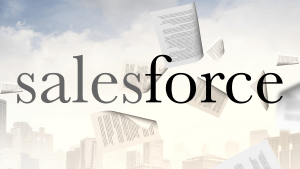- Adam Mansfield
- Reading Time: 3 minutes

A few days after Google announced they were buying data analytics vendor Looker for $2.6B to further enhance the Google Cloud business, Salesforce swooped in and grabbed the headlines on Monday by announcing that they are purchasing big data vendor Tableau Software in an all-stock deal valued at $15.7B. This will be the largest acquisition made by Salesforce and the most significant since the MuleSoft $6.5B acquisition in March of last year.
Per the deal, which is expected to close during Salesforce’s fiscal third quarter (sometime between August and October), Tableau will continue to operate independently and be led by current CEO and former Amazon executive, Adam Selipsky. Tableau has more than 86,000 customers, including Verizon Communications, Netflix, Charles Schwab, Southwest Airlines and Schneider Electric, to name a few that are publicly known. Many of these customers may already be Salesforce customers as well, and those that weren’t, are now.

Good for Salesforce?
The acquisition makes perfect sense even though there is some shock and concern around the $15.7B sticker price. Salesforce and their competitors are well aware of the fact that the enterprises they sell to are focused on data (access to it and making it valuable) and the important role it plays in successfully completing their current digital transformation journeys or those they are about to embark on. This same understanding led to Salesforce aggressively going after MuleSoft last year. In Salesforce’s press release, Co-CEO Keith Block said:
“Data is the foundation of every digital transformation, and the addition of Tableau will accelerate our ability to deliver customer success by enabling a truly unified and powerful view across all of a customer’s data.”
You can bet, if Salesforce didn’t make the move, Microsoft, Amazon, or even Google Cloud would have jumped in at some point to acquire Tableau. It truly was only a matter of time.
The acquisition also perfectly aligns directly with Salesforce’s widely known Customer 360 vision. Salesforce has been aimed solely at providing products and solutions that collectively will provide enterprises with a complete view of their customers (i.e., Salesforce’s customers’ customers). The company has gone as far as suggesting they are the only vendor that can provide this. Regarding the enhanced go-forward value Salesforce will now be able to provide their customers through the acquisition of Tableau, Salesforce co-CEO Marc Benioff said:
“Tableau helps people see and understand data, and Salesforce helps people engage and understand customers.”
You can also expect, as part of most (if not all) go-forward sales discussions, a focus on the value enterprises will receive through the unification of Tableau and Einstein. In the acquisition press release, Salesforce stated:
“With Tableau and Einstein together, Salesforce will deliver the most intelligent and intuitive analytics and visualization platform for every department and every user at any company. Tableau will make both Customer 360 and Salesforce’s analytics capabilities stronger than ever and enable the company to reach a much broader set of customers and users.”
What to Expect
- If your enterprise is currently a Salesforce customer but not a Tableau customer, we fully expect an aggressive push from Salesforce to first get an audience to discuss the value and then to push for adoption as soon as possible — but certainly as part of your upcoming renewal.
- If you are a Microsoft Power BI customer and are open to exploring Tableau, this further ramps up your leverage with Microsoft (if done correctly).
- Conversely, if you are a Microsoft Power BI customer with a renewal coming up and you are also a Salesforce customer, there is an opportunity to get Microsoft’s attention to increase your leverage come renewal as well.
Related Blogs
Don’t Let Divestitures Undermine Your Salesforce Negotiation
SaaS Price Increases: What If Vendors Only Charged More When You Got More?
Salesforce Increasing Pricing and Adding Agentforce Options: What Customers Need to Know Now
About the Author
